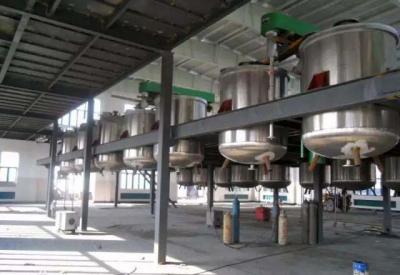Waxing the yarn before knitting and weaving is not a panacea to make the whole process completely smooth. However, after waxing, it can indeed reduce the dynamic friction between the yarn, metal, and ceramics. It can reduce the static electricity generated by factors such as high-speed separation between the yarns, as well as reduce the occurrence of poor quality problems such as fluffing, blasting, and edge blasting in the workshop.
Originally, the knitting pre-turning yarn is mainly to solve the tightness of the knitted fabric caused by the uneven tightness of the packed yarn during transportation or storage. Some large-scale weaving factories slow down the speed of their machines to prevent blasting due to their large number of looms. The purpose is to remove the waxing process of turning the yarn, the cost, as well as the texture damage or flying. However, the dry textile material yarn itself is an insulator and has a high specific resistance, especially the fiber with poor moisture absorption capacity has a higher specific resistance, and the yarn is separated and opened at a high speed. The static electricity generated by friction with the metal-ceramic during the process and the static-charged fiber will stick to the frame and the pipe, which will cause the output fiber to travel at uneven speed. It will increase the resistance, the spun yarn breakage, and unclear opening during weaving. Fabrics with static electricity are easy to absorb dust, and this kind of dust is not easy to be brushed off. The increase in resistance makes the static electricity stronger and tighter.
Yarn is an insulating material, which is difficult to discharge and is prone to charge accumulation. It will also reduce the cohesive force of the yarn and cause the head or tail of the normal short fiber to separate from the yarn and thus be cut by friction during operation. Before weaving, evenly apply a small amount of wax and fat mixture to the yarn to make the yarn have a layer of wax and fat mixture between the surface and the contact during the running process so as to reduce friction. This is a good way to solve static electricity (because prevention is more effective than cure). The abrasion of the equipment by dry friction and the damage to the equipment by the dust absorbed by static electricity are invisible, which will directly affect the service time of the equipment.
It should also be noted that the use of wax in textiles can only reduce the coefficient of dynamic friction. There is also static friction throughout the weaving process. Static friction refers to the friction produced by the yarn before and after knitting or the cloth or garment itself. While wax has little effect on static friction. To reduce static friction, fabric softeners are needed. A large amount of palmitic acid and hydrogenated vegetable oils are added, and palmitic acid is the raw material for fabric softeners. The fatty acid glycerides contained in hydrogenated vegetable oils also have characteristics of excellent softness, antistatic ability, and lubrication, so they can reduce the dynamic and static friction generated in the yarn weaving process more effectively and reduce the generation of static electricity so that the weaving process is rather smooth.
The waxing of the yarn is to let the hairiness fall on the yarn and at the same time improve the production efficiency. It can also reduce defects such as clogging of needle holes and needle cylinders caused by hairiness in the weaving process. The specific benefits are as follows:
1. It improves economic benefits: In the knitting process, the wax is used as a yarn lubricant, thereby reducing the friction of some parts and reducing mechanical wear.
2. It improves product quality: the friction coefficient is reduced so that the tension of the yarn is uniform. Also, the yarn breakage rate is reduced, and the weaving rate is improved while the product quality is improved.
3. It promotes environmental protection: it uses branded wax blocks to reduce flying in the production workshop so that the working environment of workers has been greatly improved.
4. It has good dyeing and finishing effect: the water-soluble wax block can improve the hydrophilicity and antistatic ability of the yarn, and the dyeing and finishing effect is good.
5. It can protect yarn: Some wax blocks with special functions can effectively prevent yellowing and mildew of waxed yarn.



 English
English  日本語
日本語  Español
Español  tiếng việt
tiếng việt  Türkçe
Türkçe  ไทย
ไทย  українська
українська  हिंदी
हिंदी  বাঙালি
বাঙালি  اردو
اردو 

